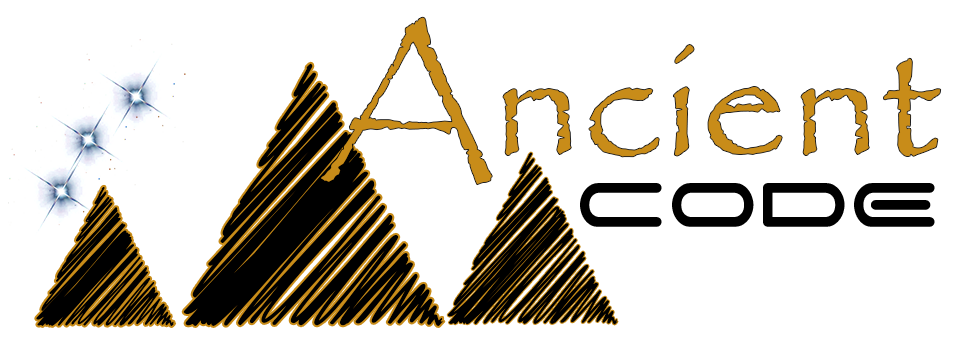A tomb containing a 2,000-old-year old skeleton was recently unearthed in the Russian republic of Kabardino-Balkaria, and it appears the remains are of an ancient warrior woman who lived during the height of the Roman Empire, according to the Daily Mail:
“She was found in the North Caucasus and is thought to have been of a ‘high-status’ within her community – possibly the wife, sister or mother of a prominent warrior or chieftain.”
Of particular interest to the archaeologists who found the tomb was the jewelry discovered at the same time, including two “very valuable rings” with dark glass centers. Archaeologist Anna Kadieva noted:
“She had two rings on her fingers manufactured with the use of quite a complex technology.”
“Each of them is cast from transparent white glass with golden fibres from the same material, with a dark glass installation in the middle.”
 One of the rings found in the tomb (Via North Caucasus united archaeolog)
One of the rings found in the tomb (Via North Caucasus united archaeolog)
The woman is thought to have been from the Alans warrior people who arrived in Caucasus in the 1st and 2nd centuries AD, Ancient Origins reports. The rings were likely “Roman made,” and a description of them highlights just how much work went into producing the items:
“A bright violet amethyst medallion was also discovered and archaeologists found that the beads found on the woman’s shoes were crafted of glass containing ‘carnelian,’ which is an orangey mineral belonging to the Quartz family and widely used during Roman times in engraved gems for signet (or seal) rings for imprinting wax seals on correspondences.”
 The workmanship on the rings is similar to that found in the ancient Roman Empire (VIa North Caucasus united archaeolog)
The workmanship on the rings is similar to that found in the ancient Roman Empire (VIa North Caucasus united archaeolog)
The Caucasus Connection
Though most of us have heard of the Caucasus region, you may not know that it was once a region of great importance because the isthmus itself is a land bridge between the Eurasian steppes and Western Asia. So it served as a way to pass between Europe and Asia during the days that Rome was the dominant power across much of the known world. It is also a region rich with reminders of the planet’s early history:
“Surveys and excavations carried out by Soviet researchers up until the 1990s revealed the existence of archaeological sites from the beginning of the Holocene, approximately the last 11,700 years of Earth’s history.”
 The location of the tomb containing the warrior woman (Via The Daily Mail)
The location of the tomb containing the warrior woman (Via The Daily Mail)
Finding the Origins of Ancient Warriors
Thousands of years ago, the people in the region were equally dispersed along the shores of the Black and Caspian Seas and in the Kura and Arax River basins. And over the past couple of decades, there has been extensive archaeological excavations in the locations that were home to the majority of the population. The results of those international missions have yielded a great deal of new finds.
All of this leads researchers to speculate that the jewels found in the Russian tomb may have been “jewels of war,” Ancient Origins notes:
“Roman soldiers reached South Caucasus at the end of the 2nd century BC and the Kingdom of Colchis was completely destroyed and incorporated into the Roman Empire as the province of Lazicum. The preceding 600 years of South Caucasian history were marked by the struggle between Rome and the Sassanids of Persia, who according to HistoryNet, allied with the Romans in the Roman-Persian Wars.”
 The tomb where the jewels were found (Via North Caucasus united archaeolog)
The tomb where the jewels were found (Via North Caucasus united archaeolog)
In 69 AD, the Roman Empire was in the midst of a bloody civil war, and part of that took place in the Caucus region that is home to the warrior tomb:
“The people of the kingdoms of Colchis (Caucasus) and Pontus, an ancient district in northeastern Anatolia adjoining the Black Sea, staged a major tribal uprising against Roman rule which ended unsuccessfully. These tiny, delicate and rare items of jewelry, found with the 2000-year-old woman’s remains, were all made and worn in these turbulent times when the ‘barbarians’ of northern Europe were being conquered by Rome: artifacts of war.”
 One of the skeletons found in the Russian tomb (Via North Caucasus united archaeolog)
One of the skeletons found in the Russian tomb (Via North Caucasus united archaeolog)
Further studies into the finds are planned, but for now, we have a glimpse into history that may well wind up adding even greater illumination to what we know about the Roman Empire and how it came to a sudden end.
Here’s more on the incredible find in Russia:
https://www.youtube.com/watch?v=625IYE6LQeg
Featured Image Via North Caucasus united archaeolog

 Movie
Movie 1 month ago
34
1 month ago
34 






![Presidents Day Weekend Car Sales [2021 Edition] Presidents Day Weekend Car Sales [2021 Edition]](https://www.findthebestcarprice.com/wp-content/uploads/Presidents-Day-Weekend-car-sales.jpg)



 English (United States)
English (United States)